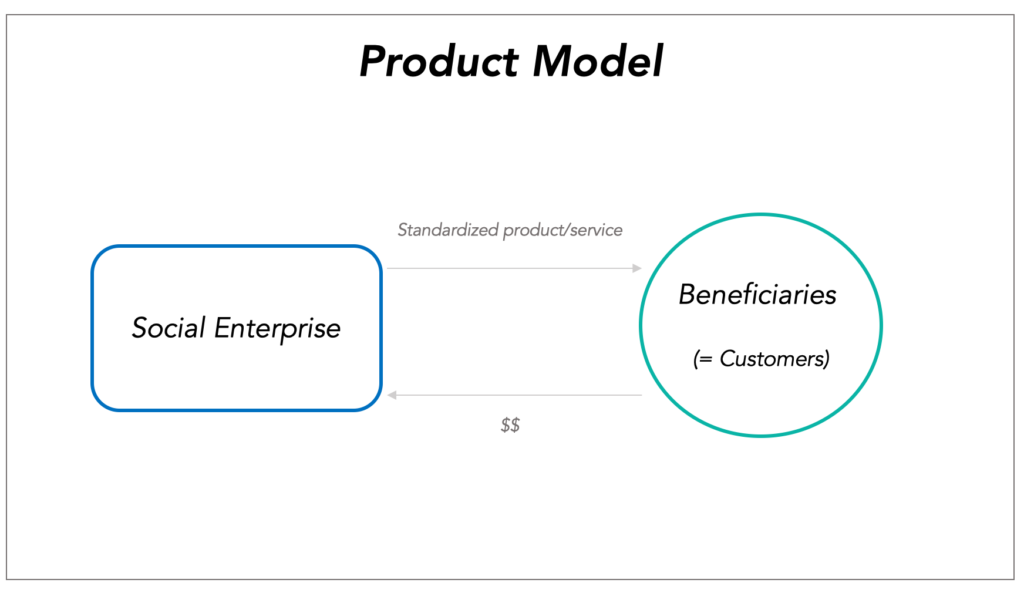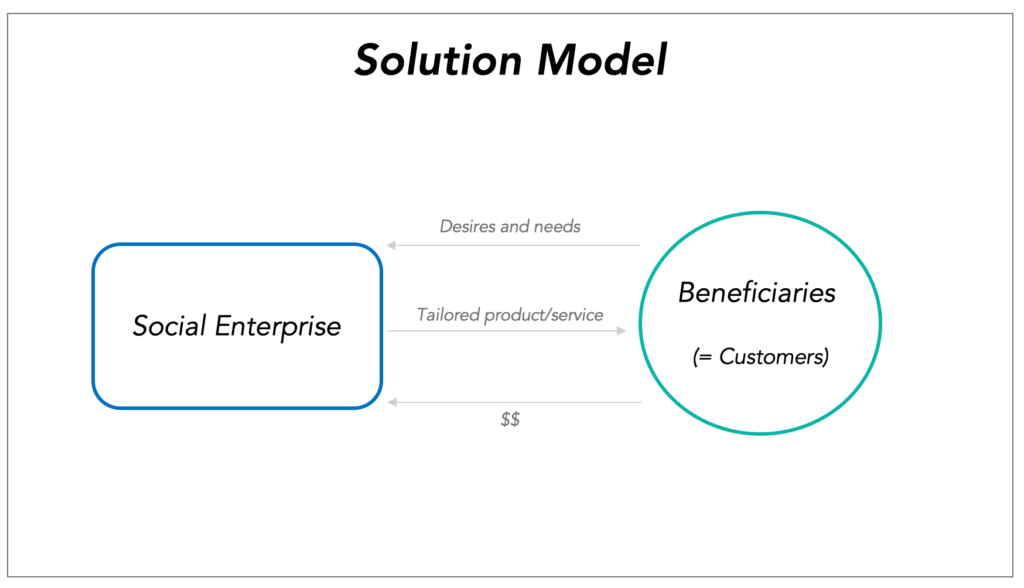
Product model and solution model
Differences and implications for social businesses
As we discussed in other sections of our website, we are on a mission to help changemakers getting more familiar with the topic of business modelling. Navigating through business models for social enterprises might indeed get challenging at times. In this article, we dig into the main differences between two diverse business models: product-based and solution-based.
Business model: a brief description
First things first, just in case you missed it. What is a business model?
According to Alex Osterwalder, a business model is “the rationale of how an organization creates, delivers, and captures value“. The core of it all lays in the concept of value and “value proposition“. Therefore, a business model makes explicit the kind of value provided to the audience, the infrastructure (i.e. activities, resources, etc.) needed to deliver it, and what’s in it for the firm.

Now, applying this logic to social entrepreneurship can get a little bit tricky. As a matter of fact, social businesses need to simultaneously create value for their beneficiaries (often fragile or unprivileged communities) and remain financially sustainable while doing it. “Quite a though challenge”, right?
True, but there are several business models for social enterprises interested in taking this path. Among all, we discuss below two different types: product model and solution model.
Product model and solution model described
Let’s start with the product-based business model. Social firms adopting a product model sell (or rent) products/services to a customer segment, getting paid in return. Here, customers and beneficiaries are actually one and the same. Because of that, social impact and profit are delivered simultaneously.

On the other hand, we have the solution-based business model. Once again, customers and beneficiaries here overlap, as social firms using such model still sell directly their beneficiaries. Yet, this time they do not sell standardized products/services, with standardized features and a clearly defined pricing. Actually, it’s quite the opposite.

Product model and solution model: main differences
Even though “product” and “solution” models are both “direct models” (selling directly to beneficiaries), they radically differ. The main reason stands in the way the firm engages and interacts with its target in order to tailor its offering.
As a matter of fact, companies adopting a product model create and deliver standardized products/services. This means that there is pretty much only one, unique offering for the whole market. The product or service sold stays the same regardless of the customer/beneficiary receiving it, with little or no room for adaptation and personalization.
Conversely, social enterprise implementing a solution model develop specific offerings with and for every single customer. This means that the company has to engage with the customer/beneficiary first, in order to create mutual trust and understand his specific needs and expectations. Only then, an integrated solution (most of the times, a service) is developed and delivered. This means that the offering is tailored, instead of being standardized.

As you may expect, choosing one model over another depends on different factors. For instance, we should prefer a “solution” model over a “product” one when the needs strongly differ from one beneficiary to the other. In such case, standardized products or services would fail in creating the same kind of value for each individual. However, keep in mind that it might be easier to achieve scalability and profitability through a product model, as customization processes can get quite costly.
Conclusion
As you probably understood, Impact Jungle is all about breaking down business models of successful social enterprises. That’s why in this article we analyzed the main differences between product model and solution model.
As seen, on one hand there is the product-based model, that creates and delivers standardized offering to its target. On the other one, we have solution-based models, that tend to engage first with customers/beneficiaries and then develop specific, tailored offerings for each one of them.
So, what about you? Which of these two business models do you think can better suit with the project you have in mind? Let us know in the comment section or feel free do drop us a message!
Did you like this article?
If so, then don’t forget to check out for more at Impact Jungle.